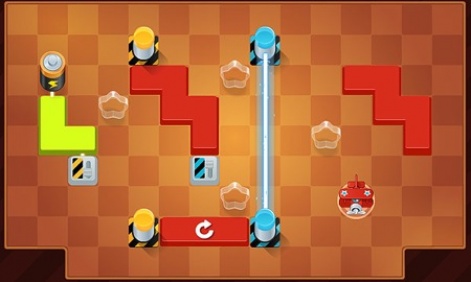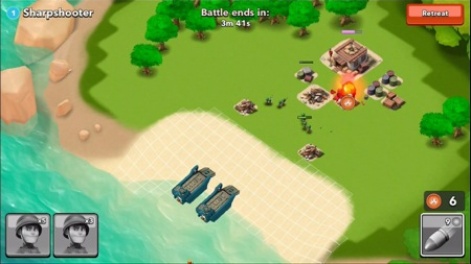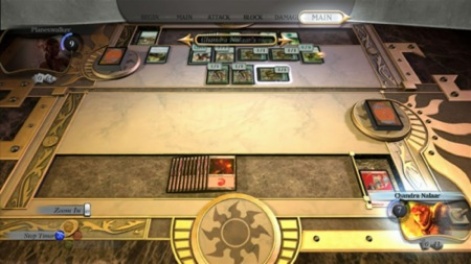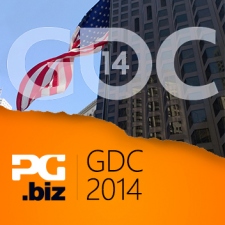A maturing market is a mixed blessing.
On one hand, the revenue generated by such a market is enticing - but Steve Meretzky from GSN Games notes that markets tend to stagnate as they mature.
Production costs rise sharply as consumers expect a more polished product, then executives "get more conservative in their decision making" leading to less risks and more "safe" bets.
This, in turn, leads to a slow down in innovation which ultimately leads to fewer new genres and fewer still new companies entering the market.
But that doesn't mean that innovation's stalled outright.
Sharing the stage with Gamehound's Dave Rohrl and Juan Gril from Joju Games, Meretzky led a discussion on the "incremental improvements" happening in some of the most prominent F2P genres.
Invest & express games
Starting with 'builder' games - typified by Farmville, Hay Day, and The Simpsons: Tapped Out - this genre's earmarked by its complex loop, high production values, and high levels of polish.

Despite the complexity of the loops, however, builder games are still extremely casual friendly and they're also widely varied.
Meretzky pointed out that there's tremendous variance in the length of the first user experience, missions, and even humour. Some, like Dragon City, even offer PvP content.
This genre has the potential for extremely handsome revenue, but it's not for everyone.
Meretzky cautioned, "You really shouldn't consider going here unless you're already established in this space or you have a huge pile of venture capital money sitting around."
Puzzle games
Juan Gril took the stage next to examine the success of F2P puzzle games and after pointing to several high-profile successes like Jelly Splash, Pet Rescue Saga, and Juice Cubes, he rhetorically questioned the need for eye-catching aesthetics
"Is it really the theme that makes a puzzle games successful? Are cute monsters or colorful fruits necessary for a game to succeed?"
The answer, if counter-exemplar Help Me Fly, is to be believed is yes. While Help Me Fly was a critical success it was not, according to Gril, commercially successful - but there was another reason for that.
"The problem is that each level in Help Me Fly only has one solution - if you dont hit it, you have to retry multiple times."
That approach contrasts sharply with Pet Rescue Saga or Jelly Splash, for example, where each move can bring players closer to their goal, and Gril believes players are more drawn to these types of open-ended experiences.
"You want a lot of little achievements, which equal little shots of dopamine," Gril noted - referencing the neurochemical produced by our brains which, simply put, makes us feel good.

In Gril's estimation, the most successful F2P puzzle games are liberal in handing out dopamine-generating moments of "mini-achievement" while saving the big hits for important milestones like clearing a level.
Clash of Clones
"Free-to-play success inspires dire imitation", Dave Rohrl began when discussing Clash of Clones aka F2P games inspired by Clash of Clans.
Mincing no words in discussing this mid-core friendly genre comprised entirely of games inspired by Clash of Clans, Rohl referred to their performance as "ok at best".
Despite "abject imitation" of the UI and aesthetics of Supercell's powerhouse, Rohl observed that "a lot of fast followers won't crack the top 100".
Because of this - Rohrl chose not to focus his examination on these reskins, and instead looked at Supercell's forthcoming Boom Beach as a potential threat to Clash of Clans' dominance.
"At first I thought it was more of the same, but - as I dug deeper, I started to see a lot of differences," Rohrl began, pointing to Boom Beach's interspersed PvP missions and two distinct, story-based arcs.
"This genre has massive revenue potential," Rohrl noted.
"Only one company has taken the field, leaving it wide open."
Collectible Card Games
Rohrl also broke down the incredibly complex world of collectible card games, all of which trace their genesis back to the 1993 release of Magic: the Gathering.
Since the release of physical CCGs, they've spawned three iterations of games inspired by their strategic gameplay: desktop CCGs, online/web CCGs, and mobile CCGs.

The different between the three lies in the depth of the experience and the complexity of the rules that accompany each card.
Desktop CCGs, like Magic: the Gathering Online, rely on 30-60 card decks and feature heavy interactions between cards (one card may affect the rules of many others). This leads to complex game states and an average play session of 15-30 minutes per game.
Contrasting this with online/web CCGs, like Tyrant or Titans vs. Olympians, Rohrl noted a switch to lane-based card play which translates to less complicated gameplay. In these CCGs, decks are usually comprised of 10-20 cards and matches last 3-5 minutes on average.
Mobile CCGs, such as Rage of Bahamut or Deadman's Cross, offer a much more streamlined experience which Rorhl summarised with his tongue planted firmly in cheek.
"First you come to the start battle screen with the deck you built, then you press 'start', then you win."
Mobile CCGs offer little to no interaction between cards, with game times now less than 10 seconds. The trade off to the lack of complexity, strategy, and complex game states is a heavy emphasis on upgrading cards between games.
While it'd be easy to dismiss mobile CCGs as inferior experience to desktop CCGs, Rohrl noted that no desktop CCGs have broken into the top grossing 100. Moreover, only a single managed that feat for online/web CCGs (Tyrant).
By contrast, 21 mobile CCGs have broken into the top 100 - five on iOS and 16 on Google Play.
Rohrl put that in another way for context, "A sixth of the top 100 grossing games on Google Play are CCGs."

To monetise efficiently with mobile CCGs, however, you need to know your audience. Rohrl noted that the typical mobile CCG player is young - 21.5 years old on average - and decidedly male (87.7 percent).
Happily, however, 11.7 percent of players engaged with mobile CCGs convert into paying players - which translates ripe opportunities for those eager to explore the genre.























